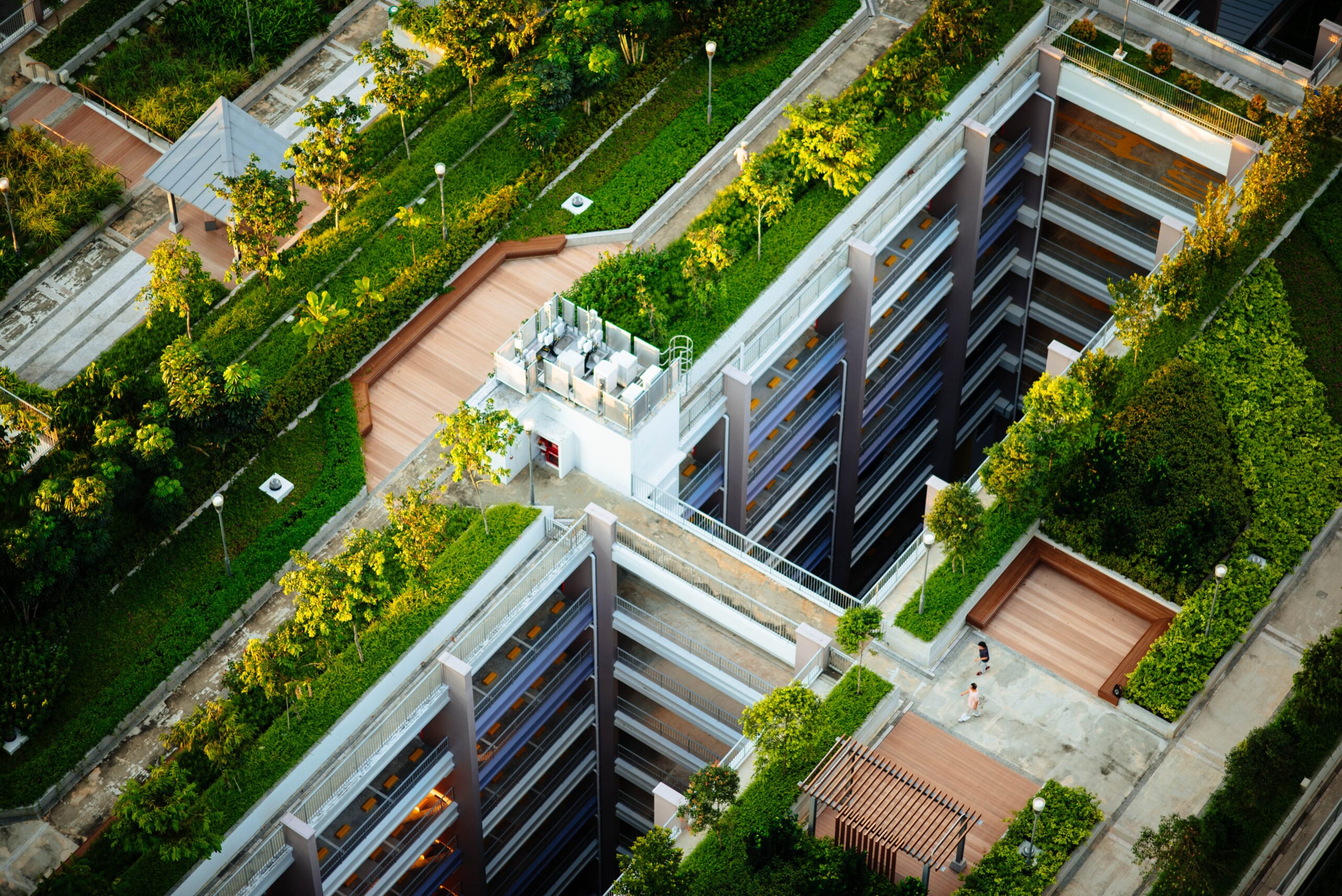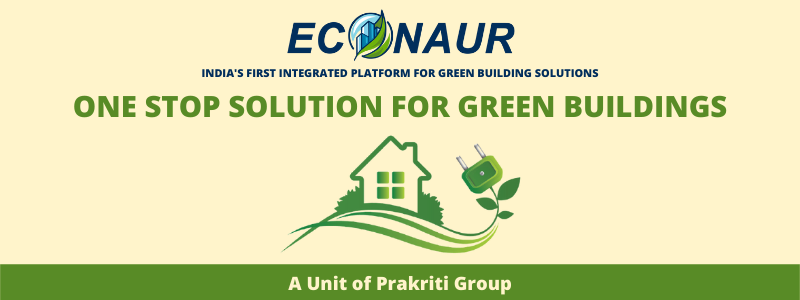10 energy efficient building materials

Use of the sustainable material is a part of sustainable development. Here we feature some of the most significant energy-efficient building materials.
Green buildings are ageless in the true sense. Green buildings are referred to as sustainable, intelligent, and reduced ecological footprint buildings. These buildings adopt building materials that increase energy efficiency and reduce water consumption. The green building practice is becoming popular among developers. The green building material market drives the demand for green building construction. Green building is one of the important solutions to sustainable development.
The sustainable building includes many strategies during the design, construction and operation of a building project. Use of the sustainable and energy-efficient green material is a part of sustainable development. A green building is defined as a high-performance building that uses less water, energy, generates less waste, maintains indoor air quality for the occupants and uses efficient building materials. Green materials are environmentally responsible materials as they help in reducing environmental impact. Sustainable building materials should have resource efficiency, indoor air quality energy efficiency and affordability.
A green building needs special materials and systems to adapt to sustainability compared with a conventional building. In line with the growing trend of green building development, the industry of green building materials and services is also developing in India. The sustainable building incorporates many strategies during the design construction and operation of the building projects. Using green building material is one of the sustainable design construction and operation strategies. Green materials are environmentally responsible materials as they help in reducing environmental impacts.
Energy-efficient building material
Roofing
One of the biggest influences on the energy efficiency of the building is the type of roof that it has installed over it. Fundamentally, for a roof to be energy efficient, it needs to do a good job of blocking the heat out instead of absorbing it. When a roof absorbs heat, that warmth is transferred into the air inside the building radiantly, and pretty soon the entire interior has gotten much warmer.

Fibre Cement
Although fibre cement roofing resembles slate in most manners, it is considerably lightweight in comparison. This is made from a mixture of portland cement and special cellulose fibre. It is an efficient fire-retardant apart from being durable in all weathers.
Concrete Tiles
These tiles are made from Portland cement and rank quite low on the eco proof scale. However, their durability has led to them becoming remarkably popular in recent years. The weight is significantly heavier than others hence it has to be considered while designing the house.
Insulation
Insulation decreases the exchange of heat (both heat gain and heat loss) through the many surfaces in a building—walls, ducts, roof, etc. In a well-insulated building, less warm air escapes during the winter, and less cool air escapes during the summer, reducing the amount of energy needed for heating and cooling. Insulation can actually be one of the most practical and cost-effective ways to improve a building’s energy efficiency: by improving the insulation in new and existing buildings, one can enjoy significant savings and reductions in energy usage.
Polyurethane insulation
Polyurethane insulation is used in many residential and commercial buildings. It is a solid, cellular polymer with high thermal resistance. Polyurethane insulation comes in open or closed cell form, in varying densities. It is typically installed as insulation on the roofs, walls, floors and ceilings of new and retrofit buildings. It is also used to insulate appliances, pipes and a variety of other products. Polyurethane insulation is a sustainable material delivering real benefits to a society facing escalating energy costs, diminishing fossil fuels and the negative environmental effects of climate change.
Polyurethane insulation is a sustainable material delivering real benefits to a society facing escalating energy costs, diminishing fossil fuels and the negative environmental effects of climate change.
Spray Polyurethane Foam Insulation
Spray Polyurethane Foam (SPF) is an insulation product that is produced on-site and is typically applied by certified applicators. Two liquid components, polymeric MDI (A) and a polyol blend (B) are mixed at high or low pressure using a spray gun, and the reacting mix is sprayed onto the substrate. It expands and solidifies to form polyurethane foam that adheres well to the area it is applied to, providing a seamless seal. SPF insulation is ideal for roofs. It can also be sprayed into exterior wall cavities, or onto the exterior sheathing of commercial and residential buildings. SPF is compatible with many different wall types.
Construction chemicals
Construction chemicals improve the quality and durability of buildings. Commonly used as bonding agents, tile adhesives, expansion & crack joint filters, and plasticizers, these chemicals increase the overall life of the construction work along with providing protection against environmental perils. Apart from adding more strength to the buildings, these chemicals bring down the volume of water and cement used in the construction process at an excellent rate.
Another key reason behind the improved adoption of construction chemicals is that it improves the performance of emerging building technologies like new thermoset hotmelts, structural tapes, and multi-purpose adhesives. Construction chemicals are one of the best things to be initiated in the building construction industry. Its astute use is sure to change the face of the global green building market.
Sealants
Sealants are used to block the passage of fluids through the surface or joints or openings in materials, a type of mechanical seal, in other words, they seal top structures to the substrate and are particularly effective in waterproofing processes by keeping moisture out.
When sealants are used between substrates having different thermal coefficients of expansion or differing elongation under stress, they need to have adequate flexibility and elongation. Sealants generally contain inert filler material and are usually formulated with an elastomer to give the required flexibility and elongation. They usually have a paste consistency to allow the filling of gaps between substrates. Low shrinkage after application is often required. Many adhesive technologies can be formulated into sealants.
Waterproofing
Waterproofing admixtures can be broadly grouped as permeability reducers and water repellents or hydrophobic (water-hating) agents. Permeability reducers are pore filling and preserve reducing materials which can be further classified into very fine particulate matters, workability and air entering admixtures, accelerators.
Water Proofers
Water repellent coatings, which can be applied on the concrete surface to impart waterproofing to the concrete structure. Thermoplastic PU has been used in the waterproofing of below-grade structures building foundations, basements, reservoirs, ponds, walkways, tunnels, earthen shelters, bridges, abutments, retaining walls, landfills and water canals. Acrylic compound polymer emulsion based additive for cement-based coatings when mixed with cement gives excellent waterproofing, excellent adhesion to the concrete substrate, steel, asbestos, excellent resistance to ultraviolet rays, excellent breathing properties and helps in reducing corrosion of reinforcement. Styrene-butadiene copolymer emulsions have also been used as waterproofing coating for concrete, which also increases adhesion strength, chemical resistance and abrasion resistance.
Windows
Windows also represent the major source of heat gain/loss, visual and thermal discomfort. In residential and commercial buildings, a considerable amount of energy has been used to compensate for the unwanted heat gain/loss through windows. Windows have undergone a technological revolution in recent years. Energy-efficient windows are now available that can dramatically cut building energy consumption. These high-performance windows feature multiple glazing, specialized transparent coatings, insulating gas in between glass panes and improved frame. All these features reduce heat transfer, thus able to cut the energy burden due to the window openings.
Low-e glass
Low-E glass stands for low-emissivity glass. This type of glass has a special metal coating which able to reflect much of the infrared portion of the solar spectrum while transmitting most of the visible. The Low-E glass manages the sun’s heat by filtering the sun’s short-wave radiation. This cuts down the amount of solar heat gain into the building. Therefore, the energy efficiency of Low-E glass is higher than that of ordinary clear glass.
Double Glazed Glasses
Double glazing glasses are nothing but a combination of multiple glass panes mostly two in number and can be three at times, these panes are having a separation by a spacer and a still layer of vacuum or gas which reduces the heat transfer while forming a part of building envelope. The thermal resistance provided reduces the artificial heating required leading to a reduction in the overall cost and also the ecological footprint. These glasses are also called as insulation glasses and the manufacturing of the same comes in with a thickness ranging from 3mm to 12mm or more depending upon its application.
source – https://aceupdate.com/2018/03/06/10-energy-efficient-building-materials/


